Welcome to Felix’s General Store!
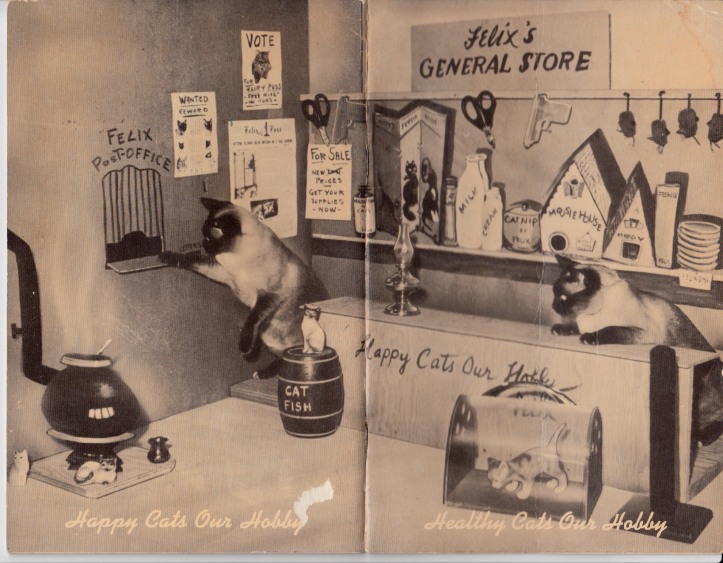
Imagine my surprise when I found this catalog, the first one I’d seen that was devoted completely to products for cats. It was published by The Katnip Tree Company of Seattle, Washington. The firm seems to have operated a wholesale and mail-order business. The company offered an array of products designed specifically for cats, and its text includes long passages of advice that read like books on pet care today. The Katnip Tree Company’s business reflected the evolving status of cats as pets that lived either exclusively or mostly indoors.
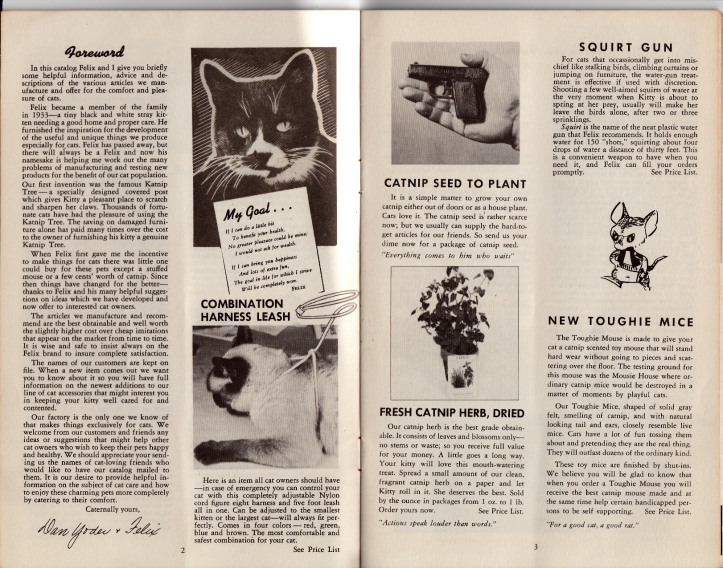
On the page to the left, above, business owner Dan Yoder explains how The Katnip Tree Company got its start, with the arrival of Felix, a black-and-white kitten, in 1933. Felix was the “inspiration for the development of the useful and unique things we produce for cats.” (Felix’s photograph appears on the same page.) Yoder recalled, “When Felix first gave me the incentive to make things for cats there was little one could buy for these pets except a stuffed mouse or a few cents’ worth of catnip.”
As I read the catalog, Yoder’s name reminded me of something I’d written about in Pets in America: A History. The first cat scratching post I’d been able to find was patented in 1935 — and who was the inventor but Dan Yoder, the owner of this company!
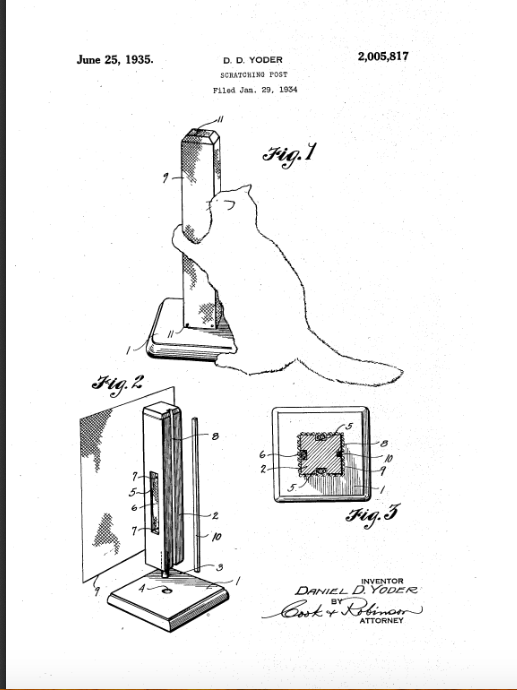
The original design evolved into a number of options, shown below, covered with heavy canvas and made more desirable by the inclusion of container holding catnip inside the pole.
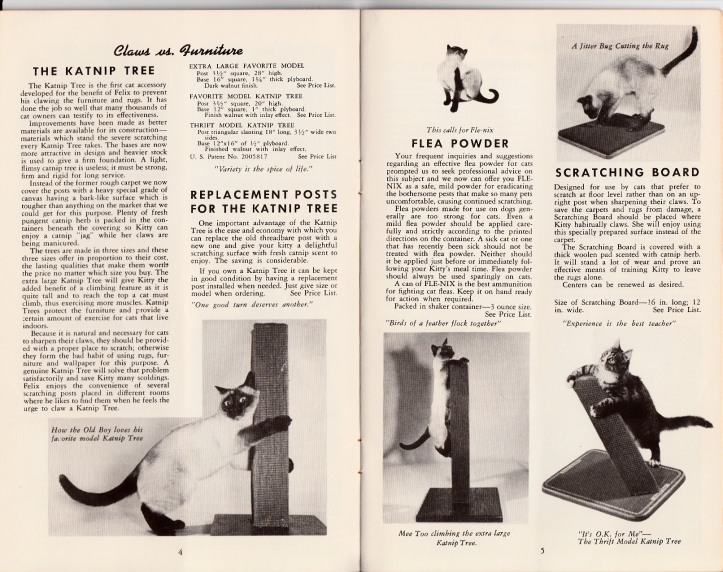
The catalog is full of other accommodations for the new “indoor cat,” including “Furnishings for Kitty’s Powder Room.” The litter box kit consisted of an enameled metal tray with a decorative cover along with sheets of waterproof paper that were intended to keep moisture in the layer of sand or granular litter, which was finding its market in the 1950s. (See my post of 15 November for a discussion of the “invention” and marketing of cat litter.). I especially like the optional “Powder Room Screen,” intended to shield the litter box. This was probably intended for settings such as city apartments, where litter boxes occupied space in bathrooms or kitchens.
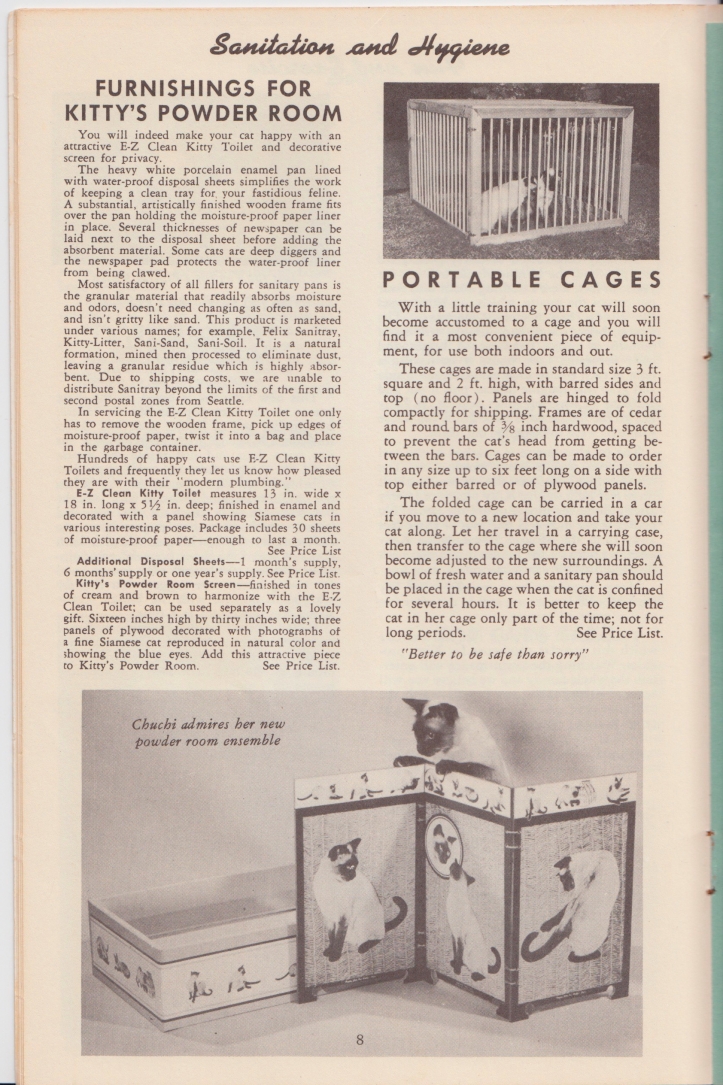
Indoor cats required “education,” according to Dan Yoder. The training kit below was intended to teach the cat to come when the owner called. (The catalog also offered a water pistol for use in training cats to leave household furnishings and plants along; this is a method that to be recommended for training cats today.) And the catalog also offered a special set of clippers for the claws of indoor cats. Around the time, the practice of declawing was being introduced in some small-animal clinics, but Yoder did not mention it and would probably not have approved.
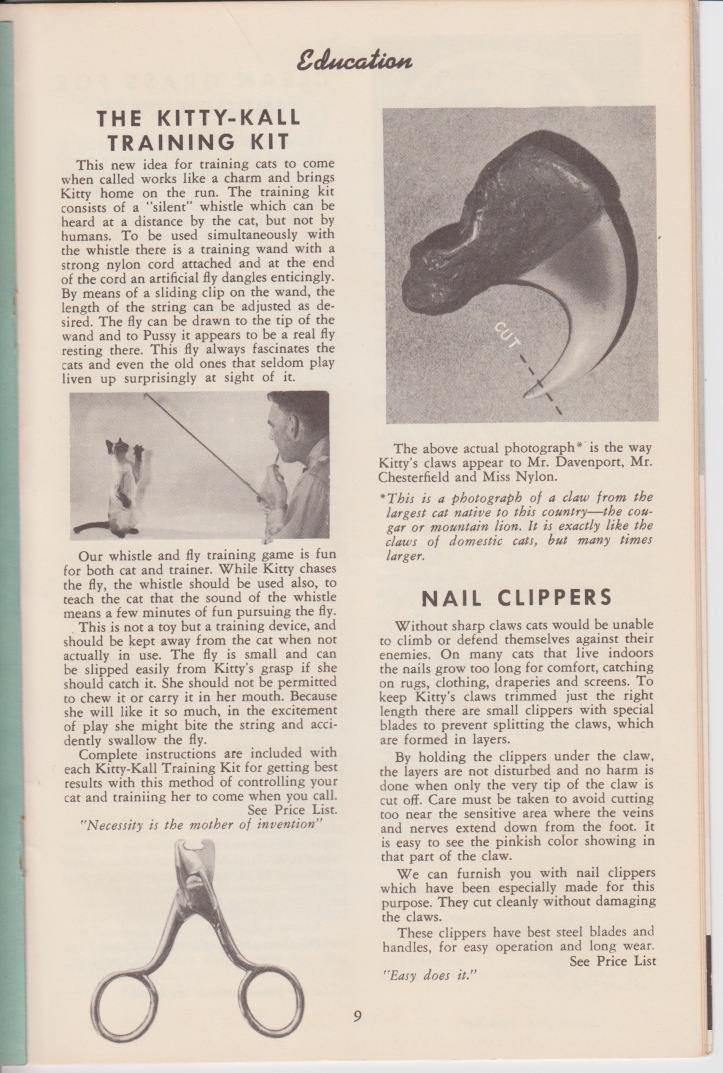
Finally, the Katnip Tree Company catalog promoted the idea of traveling with cats using its Felix C-Vue Deluxe Carrier. Noting that some veterinarians already used this product, the catalog pointed out that the plastic top and ventilation holes made cats more comfortable for car, train and airplane trips.
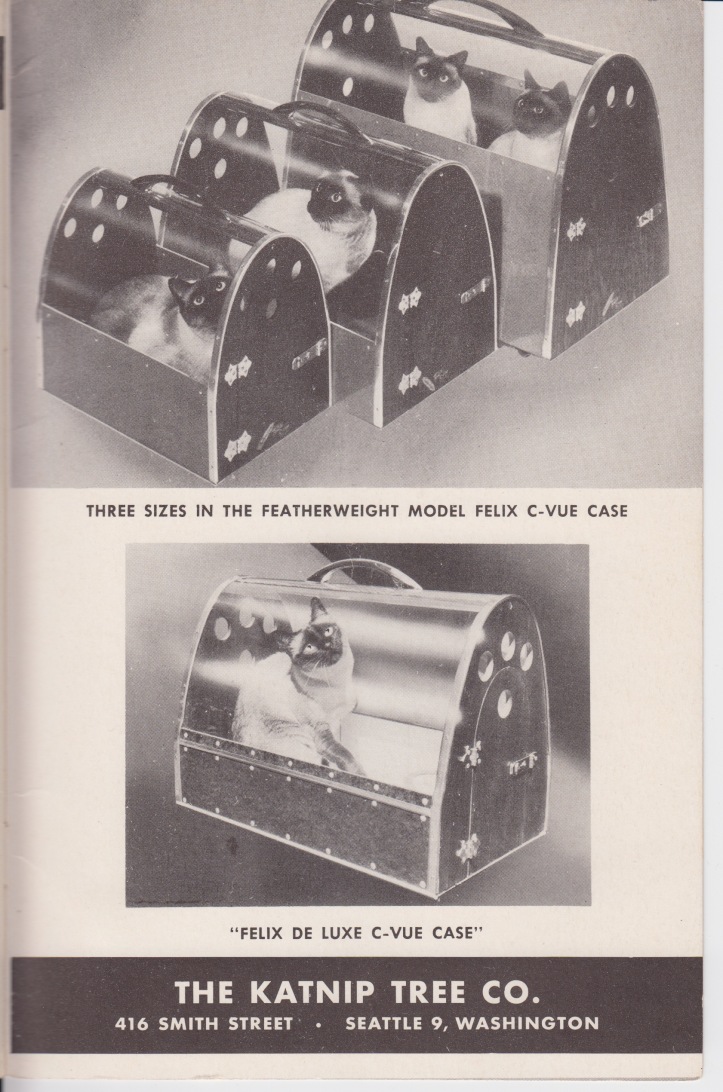
The price list below shows the entire range of products offered by Dan Yoder’s small business in 1956. Add in cat food and cat-box filler and you have a pretty complete picture of the material culture associated with the changing home lives of pet cats in the mid-twentieth century.
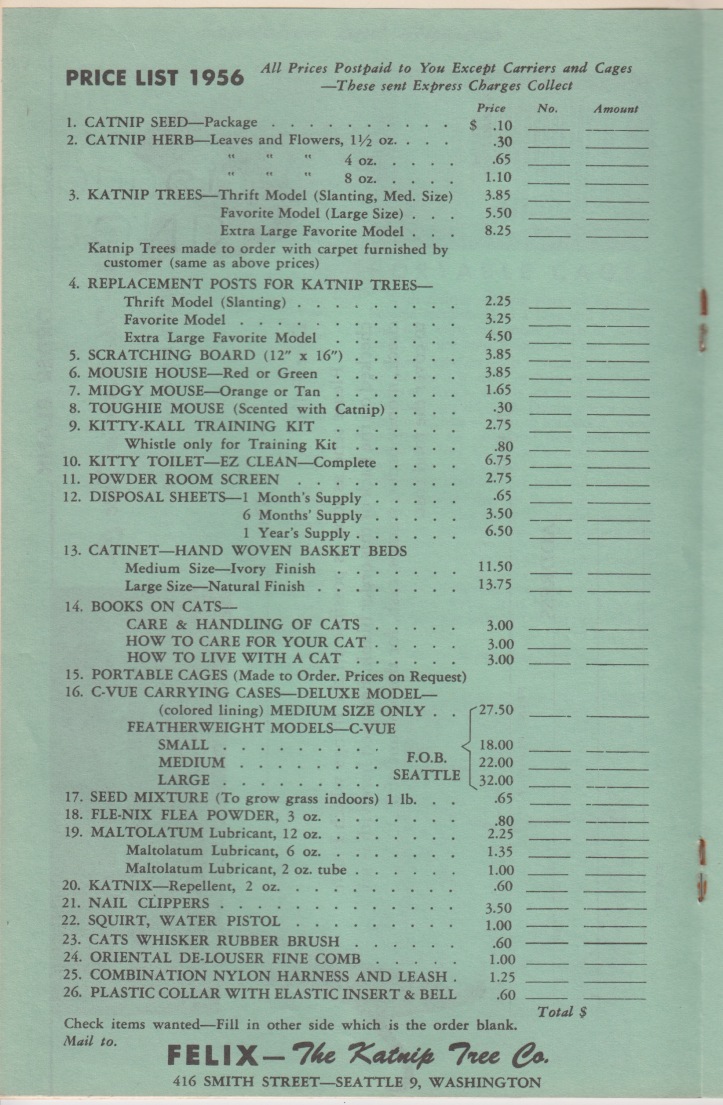
I’m impressed he could train a cat to come at his call! Mine only does so if she feels like it!
I purchased the Felix Katnip Tree Company three years ago and was so excited when I came across your article! I have bits and pieces of the company’s history and I even have some of the old products such as the Mousie House and Toughie Mouse. I have some knowledge of the early years of the Felix, but I had no idea the company offered so many products! Our scratching posts are still hand made as close to the original as possible. Thank you for digging up this old info on our little company!
I am so glad to hear from you! If you want to take some photos of your early products, I’ll do a second post on the company past and present. If you want to chat about this via e-mail, I can be reached at kcgrier@udel.edu. Or we could talk by phone — just let me know via my university e-mail, above.